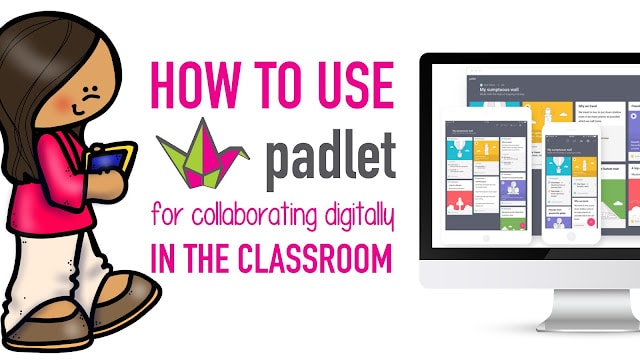Make Learning Fun with These Engaging Educational Games and Websites
Incorporating fun and interactive elements into educational experiences can transform the way knowledge is absorbed and retained. Engaging educational games and websites not only provide entertainment but also foster critical thinking, creativity, and collaboration among learners of all ages. We will explore a variety of exciting games and online resources that make learning fun as well as uncover the tools and strategies that can turn the classroom—or home—into a vibrant playground of knowledge and discovery.
The Importance of Fun in Learning
When students are curious and excited, they’re more likely to absorb and retain information. By incorporating fun into education, we help young minds stay active, adventurous, and more open to new ideas. After all, who wants to sit through a lecture when they could be laughing, exploring, and discovering?
How Fun Facilitates Retention and Understanding
Fun experiences create positive associations, making students more likely to want to repeat the experience. Incorporating games and playful experiences helps learners develop a deeper understanding of concepts rather than just checking boxes on a list. We want to ensure they don’t just know the facts but can also apply them in real-life situations!
Top Educational Games
We have The Top Educational Apps for Elementary Students: A Comprehensive List if you really want to hone in on the perfect resource, but here are a few highlights to get you started.
Games for Early Childhood Learning
Little ones love to play, and luckily, playtime is a perfect vehicle for learning! Games introduce literacy and numeracy in a fun, hands-on manner. Websites like ABCmouse and Starfall provide interactive activities that grow alongside your child’s skills, turning learning into a joyful adventure filled with sing-alongs and animated characters.
Elementary School Favorites
Games like Prodigy and Kahoot! allow students to compete with friends while mastering math concepts or reviewing history. They’re like the sports of the learning world—everyone wants to join in! Plus, platforms like ABCya offer a variety of subject-related games that make it easy for students to learn while battling dragons or racing cars. Yes, learning can be that epic!
Middle School Challenge Games
Middle school is where things can get tricky, but that’s what makes games like Quizlet Live and Minecraft: Education perfect for this age group. They blend challenge with collaboration, encouraging teamwork and critical thinking. Students can construct, explore, and compete—all while grasping complex topics like geometry or environmental science. Who knew that building a fort could help learn about ecosystems?
High School and Beyond: Advanced Learning Tools
High schoolers are on the brink of adulthood, so they need engaging tools that keep up with those growing minds. Websites like Khan Academy and Coursera offer courses covering a wide range of subjects—from AP Chemistry to ethics in technology—allowing students to delve deeper into topics they’re passionate about.
Websites for STEM Education
STEM (science, technology, engineering, and math) websites like Tynker and Code.org make coding approachable and fun, while platforms such as Mystery Science offer engaging, hands-on science lessons that allow kids to investigate the mysteries of the universe.
Creative Arts and Humanities Resources
Creativity is just as crucial in education as any math equation. Websites like Art for Kids Hub and Toy Theater’s music section encourage students to express themselves through various mediums, whether it’s drawing, painting, or composing a song. Plus, resources like Google Arts & Culture take students on virtual tours of museums worldwide, enriching their understanding of history and culture without the need for a plane ticket.
Language Learning Platforms
Learning a new language can feel daunting, but platforms like Rosetta Stone, Babbel and FabuLingua make it a breeze. With interactive lessons, speaking practice, and even games, users can acquire new languages through an engaging and supportive environment. Throw in a little gamification—like earning badges or leveling up—and you’ll have learners chomping at the bit to say “Bonjour!” or “Hola!” in no time!
Virtual and Augmented Reality
If you thought educational games couldn’t get any cooler, think again! Virtual and augmented reality are stepping onto the stage, taking kids on adventures through ancient civilizations or into the depths of the ocean. With VR headsets and AR apps, students can explore historical sites or conduct science experiments right from their living room—making them feel like explorers in their own right.
Incorporating Gamification in the Classroom
Practical Strategies for Teachers
Gamifying your lessons can amplify engagement and motivation in the classroom. Consider turning assessments into friendly competitions with quiz-style games or using leaderboard systems to encourage participation. You could also introduce role-playing games where students can assume different historical figures or characters from literature, making learning a structured bear of a story. Our guide on How to incorporate gamification in the elementary classroom has even more workable ideas for you. The possibilities are endless!
Measuring Success and Engagement
But how do you know if your gamification efforts are working? Surveys, informal check-ins, or even exit tickets can provide valuable insights. Look for improvements in knowledge retention and skill application. Celebrate small wins and remember: learning should feel like leveling up in a game, not an insurmountable boss fight!
Tips for Parents: Encouraging Learning at Home
Your living room can be a classroom too! By incorporating colorful charts, interactive displays, and a few educational games, you can transform generic home spaces into vibrant learning hubs. When kids associate learning with fun, they’ll be more eager to dive into the educational pool.
Balancing Tech Use and Play-Based Learning offline is crucial. Encourage your little ones to explore nature, read books, or engage in crafts that complement what they learn online. Plugging into the digital world and stepping outside teaches kids that learning is everywhere.
Encouraging Lifelong Learning through Fun
By embracing the playful side of education, we’re not just equipping kids with knowledge; we’re nurturing curious minds that thrive on exploration. As they grow, the lessons learned through games will be the stepping stones to their success.
Making learning fun is essential for fostering a love for learning and encouraging academic growth. By utilizing engaging educational games and interactive websites, both teachers and parents can create enriching environments where students thrive. As we embrace the power of play in education, we open the door to endless possibilities for exploration and discovery. So, whether in the classroom or at home, let’s prioritize enjoyable learning experiences that inspire curiosity and a lifelong passion for learning.






